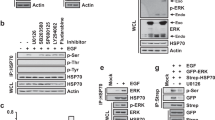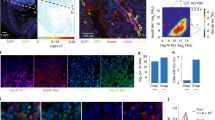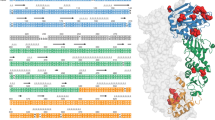Abstract
Hsp72 is the major heat shock-inducible protein capable of protecting cells from a variety of stresses. In non-transformed cells at normal conditions Hsp72 is expressed at very low levels. It is, however, present at elevated levels in the major fraction of tumors and in many transformed cell lines. It is commonly assumed that in tumor cells the expression of Hsp72 at elevated levels is the consequence of oncogenic transformation. In the present study we addressed an alternative possibility that Hsp72 plays an active role in the process of oncogenic transformation. We report here that when Hsp72 was expressed in the Rat-1 fibroblasts either constitutively or from an adenovirus-based construct, cells become oncogenically transformed by the following criteria: loss of contact inhibition and formation of foci characteristic for oncogenically transformed cells; acquisition of the ability to grow in an anchorage-independent manner and to form colonies in soft agar; generation of tumors upon injection into mice. Furthermore, we also report that turning off the Hsp72 expression led to the reversal of the transformed phenotype. We also show that oncogenic potential of Hsp72 is confined in its peptide binding domain since the expression of this domain alone was sufficient for oncogenic transformation of Rat-1 cells.
This is a preview of subscription content, access via your institution
Access options
Subscribe to this journal
Receive 50 print issues and online access
$259.00 per year
only $5.18 per issue
Buy this article
- Purchase on Springer Link
- Instant access to full article PDF
Prices may be subject to local taxes which are calculated during checkout





Similar content being viewed by others
References
Amici C, Palamara A and Santoro M. . 1993 Exp. Cell Res. 207: 230–234.
Ciocca D, Clark G, Tandon A, Fuqua S, Welch W and McGuire WJ. . 1993 Natl. Cancer Inst. 85: 570–574.
Clark G, Cox A, Graham S and Der C. . 1995 Methods in Enzymology 225: 395–412.
Feder J, Rossi J, Solomon J, Solomon N and Lindquist S. . 1992 Genes and Devel. 6: 1402–1413.
Gabai V, Meriin A, Mosser D, Caron A, Rits S, Shifrin V and Sherman M. . 1997 J. Biol. Chem. 272: 18033–18037.
Georgopoulos C and Welch W. . 1993 Annu. Rev. Cell Biol. 9: 601–634.
Heydari A, Takahashi R, Gutsmann A, You S and Richardson A. . 1994 Experientia 50: 1092–1098.
Jani A, Lochmuller H, Acsadi G, Simoneau M, Huard J, Garnier A, Karpati G and Massie B. . 1997 J. Virol. Methods 64: 111–124.
Li G, Li L, Liu R, Pehman M and Lee W. . 1992 Proc.Natl. Acad. Sci. USA 89: 2036–2040.
Li G, Mivechi N and Weitzel G. . 1995 Int. J. Hyperthermia 11: 459–488.
Mosser DD, Caron AW, Bourget L, Denis-Larose C and Massie B. . 1997a Mol. Cell. Biol. 17: 5317–5327.
Mosser D, Caron A, Bourget L, Jolicoeur P and Massie B. . 1997b Biotechniques 22: 150–161.
Pratt W. . 1997 Ann. Rev. Pharmacol. Toxicol. 37: 297–326.
Rattan S. . 1996 Exp. Gerontol. 31: 33–47.
Seo J, Park Y, Kim J, Shim E, Kim C, Jang J, Kim S and Lee W. . 1996 Biochem. Biophys. Res. Commun. 218: 582–587.
Author information
Authors and Affiliations
Rights and permissions
About this article
Cite this article
Volloch, V., Sherman, M. Oncogenic potential of Hsp72. Oncogene 18, 3648–3651 (1999). https://doi.org/10.1038/sj.onc.1202525
Received:
Revised:
Accepted:
Published:
Issue Date:
DOI: https://doi.org/10.1038/sj.onc.1202525
Keywords
This article is cited by
-
A small molecule inhibitor for ATPase activity of Hsp70 and Hsc70 enhances the immune response to protein antigens
Scientific Reports (2015)
-
Basal and stress-induced Hsp70 are modulated by ataxin-3
Cell Stress and Chaperones (2012)
-
Antileukemic activity of the HSP70 inhibitor pifithrin-μ in acute leukemia
Blood Cancer Journal (2011)
-
Epigallocatechin-3-gallate suppresses the expression of HSP70 and HSP90 and exhibits anti-tumor activity in vitro and in vivo
BMC Cancer (2010)
-
Heat-shock proteins in infection-mediated inflammation-induced tumorigenesis
Journal of Hematology & Oncology (2009)



